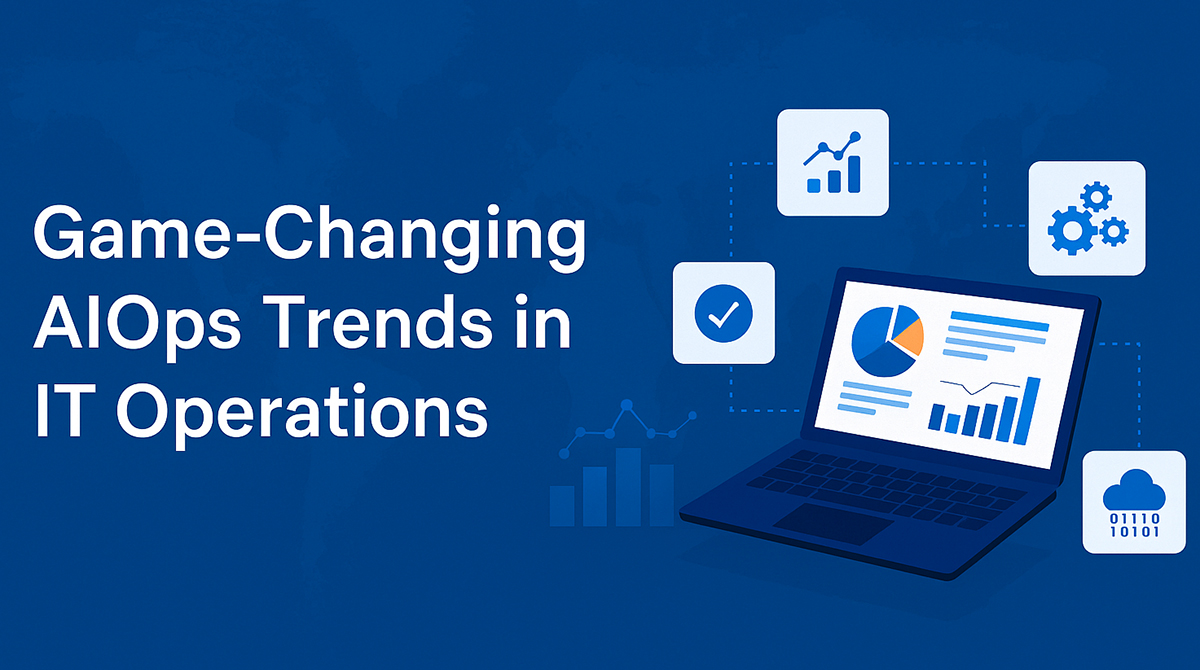No products in the cart.
 Why AIOPS Is the New Backbone of Modern IT
Why AIOPS Is the New Backbone of Modern IT
The digital enterprise of 2025 demands more than just uptime; it requires agility, foresight, and a self-correcting infrastructure. Traditional monitoring and manual incident resolution no longer suffice in hyper-connected ecosystems. AIOps is emerging as the pivotal technology, delivering an intelligent, automated framework that transforms how IT teams manage complex, distributed environments.
Understanding AIOps in Modern IT
AIOps integrates big data, machine learning, and automation to enhance IT operations. Moving beyond static thresholds and reactive alerts, it uses dynamic analysis to detect, diagnose, and resolve issues across vast datasets. This fusion of real-time processing, advanced analytics, and automated remediation empowers IT teams to act with speed and precision.
The Shift Toward Predictive IT: Goodbye to Reactive Monitoring
Proactivity is now central to IT performance. AIOps leverages predictive analytics to anticipate disruptions through trend and behavior analysis. It empowers teams to address issues like memory leaks or storage saturation before they escalate, shifting IT from a break-fix model to a preventive strategy.
Autonomous IT Operations: When Systems Start Fixing Themselves
Imagine infrastructure that self-diagnoses, scales automatically, and reroutes traffic without intervention. AIOps brings this vision to life with intelligent automation that reduces manual effort. This enables IT teams to concentrate on strategic initiatives, creating self-reliant systems that enhance efficiency.
Real-Time Decision Making: Blending Velocity with Insight
AIOps thrives on real-time data and situational awareness, making operations responsive and informed. By analyzing telemetry—logs, metrics, and traces—it delivers fast, actionable insights. This ensures issues are resolved at business speed, minimizing downtime and maximizing reliability.
AIOPS and Hybrid Cloud: Streamlining IT Infrastructure
Today’s IT environments span on-premises, private cloud, and public cloud systems. AIOps provides a unified lens to monitor and manage this complexity. By aggregating data across hybrid infrastructures, it forms a cohesive operational layer that simplifies orchestration and enhances control.
Advanced Anomaly Detection: Spotting the Invisible
Small anomalies can trigger major disruptions if ignored. AIOps detects these through sophisticated machine learning, identifying outliers that traditional systems miss. Early detection protects service health and prevents failures before they cascade.
AI-Driven Root Cause Analysis: No More Needle in a Haystack
Troubleshooting doesn’t have to be tedious. AIOps employs advanced engines to correlate events, trace dependencies, and pinpoint faults in seconds. This reduces MTTR and enhances responsiveness, freeing up resources for higher-value tasks.
Smarter Capacity Planning: Scaling Without Guesswork
Static resource allocation no longer meets modern demands. AIOps informs capacity planning using historical usage, seasonal patterns, and predictive modeling. This ensures infrastructure scales efficiently, avoiding waste and performance bottlenecks.
How NLP Enhances AIOps
Natural Language Processing bridges human input and machine understanding. It extracts insights from unstructured data—support tickets, chat logs, documentation—and powers conversational interfaces. This improves AIOps context, accuracy, and user interaction.
Security and Compliance in the AIOPS Era
AIOps contributes significantly to cybersecurity and compliance. It continuously monitors for anomalies, detects potential breaches early, and automates reporting and policy enforcement. This supports regulatory adherence while minimizing manual oversight.
Challenges in Adopting AIOPS: What’s Holding Teams Back
Despite its promise, AIOps adoption presents challenges. Integrating legacy systems, breaking down data silos, and addressing organizational resistance are key hurdles. Success requires strategic planning, executive support, and phased implementation.
Future Outlook: What’s Next for AIOPS in IT Operations
The AIOps journey is just beginning. Future trends include edge computing integration, agentic AI for adaptive responses, and context-aware decision-making. As AIOps evolves, IT environments will become more predictive, autonomous, and self-optimizing.
Conclusion:
Adapting Today for an Autonomous Tomorrow AIOps isn’t a trend—it’s the foundation of future IT operations. Embracing it now equips organizations for agility, intelligence, and self-governance. Early adoption accelerates the path to a resilient, forward-looking IT ecosystem.
Stay updated! Follow us on social media! Facebook, Twitter, LinkedIn
Check out our newest blog entry (Why App Architecture Is Crucial in 2025)
Subscribe to get free blog content to your Inbox



 Why AIOPS Is the New Backbone of Modern IT
Why AIOPS Is the New Backbone of Modern IT